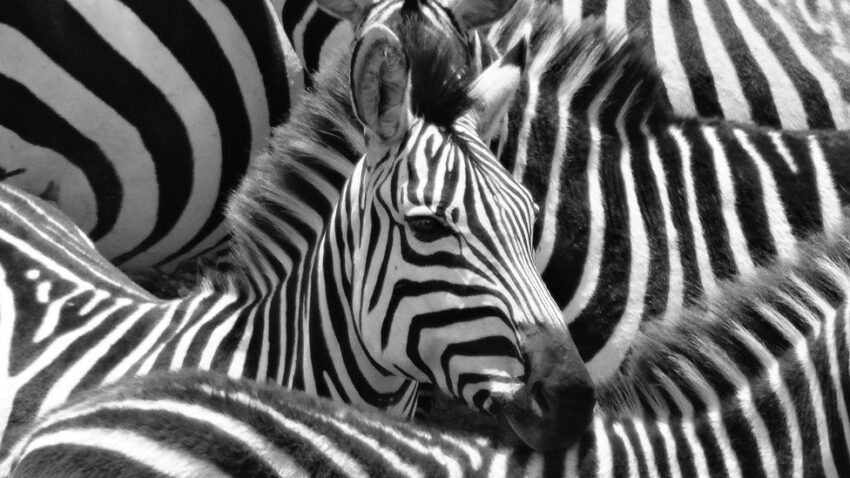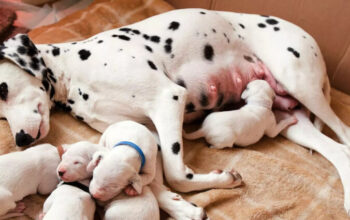Spotted. Ticked. Tabby. Siamese. What do all of these words have in common? They’re all names for different cat coat patterns and markings. And like people, cats come in all shapes, sizes, color varieties, and markings (from tabby to spotted), with some having unique names of their own.
In this blog, we will unravel the mysteries of cat stripes and how they form. We will cover the genetics behind cat markings and spontaneous pattern formation and its implications for feline geneticists.
What Causes Variations in Striped Patterns?

Cat stripes are known for their distinct pattern and color. However, the reasons behind variations in the pattern of stripes in cats are not well understood. Wnt and Dkk4 proteins are activators and inhibitors respectively, and the imbalance between these two proteins causes the pattern of stripes. The mutation of this gene or hormones can also lead to variations in stripes. Besides that, genetic mutations and hormonal imbalances also play a role in creating variations in stripes.
Solid-colored cats are created when instructions to produce dark pigment are overridden. A mutation in a gene called Taqpep, which can be turned off by mutation, is responsible for the blotchy “classic” pattern of stripes seen in domestic cats. Understanding the reason behind the variations in cat stripes will help in breeding varieties with unique patterns to enjoy them all.
The Genetics Behind Cat Stripes Revealed
There are many different kinds of cat coat patterns, but the tabby pattern is one of the most well-known. This pattern occurs when a cat inherits two copies of the “Smd” gene from each parent.
The Smd gene is responsible for creating stripes in domestic and wild cats. A mutation to this gene stops hair follicle development, and cats with this coat pattern have blotchy skin. The tabby pattern is evident in embryonic tissue even before hair follicles start to grow, so it is likely genetic factors play a role in its development.
Hair follicle development shapes a cat’s coat color and pattern, but multiple genes work together to create the design of a cat’s coat. Scientists have recently identified the gene that creates tabby stripes in domestic cats, opening new doors for genetic research on coat color and patterning.
Scientists Uncover Genetic Mechanism Behind Striped Fur
They have identified a cat gene responsible for the distinctive striped fur of domestic cats. The gene, called “striped,” is part of a feline genetic study by Stephen O’Brien of the National Laboratory for Cancer Research. In collaboration with tabbies’ geneticists at the University of Wisconsin-Madison, O’Brien identified a specific variation on a cat’s chromosome to create striped fur.
This gene is involved in pattern formation and is the first of the pattern genes to be identified. It’s been suggested that cats prefer the blotched pattern if this gene is turned off, as it results in softer stripes. The feline genetic study was an important step toward understanding striped fur, which has become commonplace in domestic cats across the world.
The finding could help cat lovers choose cat hair fashions that suit their unique personal style and color preferences.
Spontaneous pattern formation
Elongated cats with stripes on their fur are not born that way. Rather, it is thanks to two processes that stripes spontaneously appear on cats’ hair coats. One process involves the patterning of pigment during development, and the other involves the activator and inhibitor molecules in hair follicles.
Alan Turing’s reaction-diffusion theory suggests that activator and inhibitor molecules can self-organize a pattern during development. When an inhibitor gene DKK4 is expressed, it marks the areas that will have pigment, while the activator is unknown. Wnt protein and Dkk4 act as activators and inhibitors respectively and the faster-moving Dkk4 protein is thought to turn off Wnt, thereby generating stripes. Thus, cats with stripes are a result of both spontaneous patterning and genetic factors affecting hair pigmentation.
Unraveling the puzzle
A cat’s coat consists of hair follicles, which produce hair filaments, and skin cells, which form the skin’s outer layer. These cells are covered with pigment-containing cells, known as melanocytes. The pigment cells produce pigment proteins called eumelanin and phaeomelanin. This is then distributed evenly across the hair follicle.
Eumelanin is dark brown to black in color and is best at absorbing light. Phaeomelanin is yellowish-brown or orange and reflects more light than eumelanin. Cats with colored stripes have eumelanin distributed uniformly across their hair follicle; cats with spotted coats have a greater proportion of phaeomelanin. The pattern of color on a cat’s coat depends on its genetic makeup, the environment it lives in, and the genes it inherited from its parents.
A domestic cat is descended from wildcats such as the African serval (Leptailurus serval), the African wildcat (Lynx rufus), the Indian wildcat (Felis bengalensis), the Javan leopard cat (Prionail macroura), ring-tailed leopard cat (Galidia elegans), Asian leopard cat (Panthera pardus tigris), and domestic cat (Felis silvestris). Cats with distinct stripes or blotches on their coat have different genetic mutations that cause different coat markings.
Scientists have been investigating how various genes combine to give cats their distinct striped or blotched coat patterns. In the UK, an estimated 26% of adults own a cat and there are over 10 million pet cats worldwide.
Genetics at play
A specific gene variation in cats’ chromosomes is responsible for the stripes many cats have. Cats with stripes have been bred to exhibit bright, unique coat markings over the years. The gene that controls stripes in domestic cats is known as the eumelanin pathway and it involves a protein called tyrosinase.
The protein tyrosinase breaks down the chemical pigment eumelanin into two forms – dark brown or black and white or pale – as part of its role in cat skin color development. Cats with stripes are genetically predisposed to develop stripes because of this gene mutation.
The same gene gives cheetahs their stripes. As with domestic cats, cheetahs possess a genetic mutation that controls coloration. However, cheetahs are able to change their coat color on a whim because they possess a different allele of the gene – g-protein pathway – which governs pigment formation in cells.
In other words, domestic cats’ eumelanin pathway makes them prone to develop stripes whereas cheetahs’ g-protein pathway gives them the ability to alter their coat color at will.
Another gene called DKK4 is responsible for cats’ stripes. This gene is expressed in some parts of the body but not in other parts, resulting in the striped pattern seen in cats with tabby markings or bi-colored fur. The cat’s coat patterning is determined by its genes and environment, and cats with stripes are no different from those without them.
Implications of the study
A recent study carried out by a research team from the Zoological Society of London has revealed that a genetic variation in cats’ chromosomes is responsible for the striped fur they possess. The cat with stripes had two versions of a gene called pigmentanocortin 1 receptor (PCNR1), while cats without stripes had the other version of the gene.
The research indicated that these variants act as activators or inhibitors, respectively, for Wnt and Dkk4 proteins, which are involved in pigmentation. This can cause spots and stripes in cats, as well as other mammals. This process of pattern diversity in cats can be applied to other animals as well.
The findings of the study suggest that cats with stripes may have a genetic advantage over those without them, making their markings more obvious to predators and prey alike.
This phenomenon may also be linked to their ability to open their mouth wide and catch fast-moving prey, giving them an edge in survival.
Conclusion
There is no exact answer to the question of how cats get their stripes. However, it is evident from the research and experiments mentioned above that cats have been evolving for millions of years, and their fur and coat markings have been adapting in response to changes in the environment. As you can see, cats don’t just have different patterns for looks; they also serve a purpose. They help keep predators away from prey, protect against the elements, and make it easier for cats to identify each other as individuals. It’s clear that nature has had a hand in creating these beautiful felines! If you’d like to share your thoughts on this or anything else related to cats, go ahead and comment below. We’d love to hear from you!
If you like to read more click here








